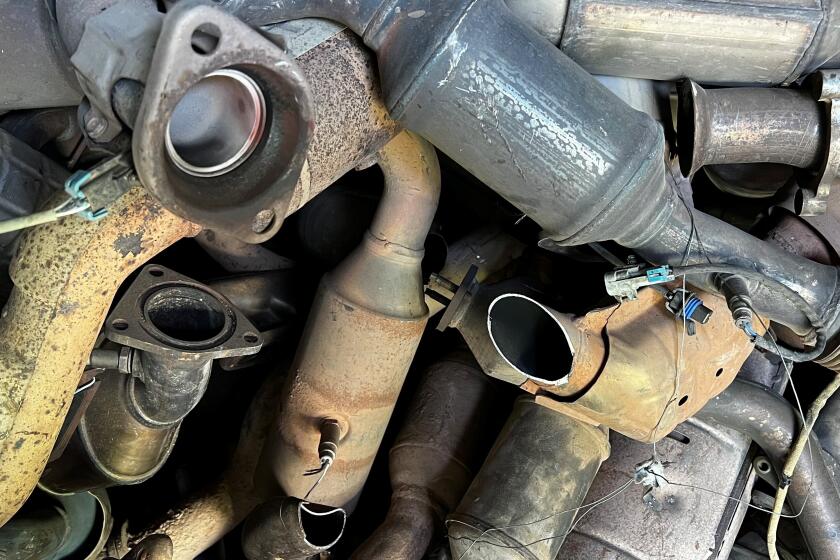Carlsbad Is First to Embrace Plan to Save Wildlife
- Share via
Carlsbad has become the first city in California to take part in a voluntary plan to preserve endangered plant and animal life within its boundaries, officials said.
The City Council voted Tuesday night to join the state’s Natural Communities Conservation Plan, a pilot program that calls for cities to work with state and federal officials to practice pro-active habitat management.
Under the program, Carlsbad officials, citizens and business interests will identify environmentally sensitive habitat that would become off-limits for building or development.
The council voted, 4 to 0, to approve the city’s participation in the program. Mayor Bud Lewis was out of town and did not vote.
“This is pretty exciting,” Councilwoman Julie Nygaard said. “What we’re doing is identifying habitats that are worth saving rather than identifying species on an individual basis. In this way, everyone wins. The city can develop good human habitats and good animal habitats as well.”
In May, city officials reached agreement with a major San Diego County developer, the Fieldstone Co., to set aside nearly 500 acres owned by the company that is also the prime habitat of the California gnatcatcher. The tiny songbird has been proposed by the U.S. government for listing as an endangered species.
The program, which officials called the first of its kind in the United States, is aimed at protecting not only the gnatcatcher but also the coastal sagebrush in Southern California.
State officials say California has 125 species listed as threatened or endangered. Another 2,350 species are identified by the federal government for potential listing as endangered.
“There’s a whole menu of things we’re looking out to protect, not just the gnatcatcher,” Councilwoman Ann Kulchin said. “There are weeds and other plants and animals. It’s the idea of environmental conservation that excites us, to decide what needs to be protected and protect it.”
Under the conservation plan, city officials would work with the California Resource Agency and the U.S. Fish and Wildlife Service to establish which areas are worthy of protection.
“We’re going to map out the whole city and look at it bit-by-bit,” Nygaard said. “We think this is the environmental answer for the future. We’ve found that no-growth doesn’t work, but that orderly growth does, making room for people and animals at the same time.”
Officials said the city will negotiate with business interests to determine which parcels will be put off limits for commercial development.
Nygaard said the process will be “a long series of negotiations” and that she expected disagreements.
“We’re master-planning,” she said. “Sure, not everyone’s going to be in agreement about every piece of land. But talking about the whole process from the start is a lot better than having all these battles that come up at the eleventh hour between developers and environmentalists.”
Their plan, city officials say, takes the “knee-jerk reaction” out of community development.
“It’s the sane way to go,” Nygaard said, “to look at the whole gestalt rather than looking through some long, dark tunnel.”
More to Read
Sign up for Essential California
The most important California stories and recommendations in your inbox every morning.
You may occasionally receive promotional content from the Los Angeles Times.











